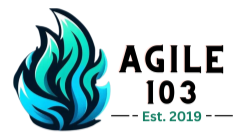Facilitated by Tox B.
In the fast-paced world of software development, ensuring quality is paramount. Our upcoming event in June 2025, “Practical QA Strategies: Tool Selection, Testing Balance, and Measuring Effectiveness,” aims to equip QA professionals with actionable insights to enhance their testing processes.
Selecting the Right QA Tools
Choosing appropriate QA tools is crucial for efficient testing. Consider the following factors:
-
Project Requirements: Understand the specific needs of your project.
-
Integration Capabilities: Ensure the tool integrates seamlessly with your existing systems.
-
Ease of Use: Opt for tools that are user-friendly to reduce the learning curve.
-
Community Support: A strong user community can be invaluable for troubleshooting and best practices.
For a comprehensive guide on selecting automated testing tools, refer to HeadSpin’s article: Selecting Automated Software Testing Tools: An Ultimate Guide.
Balancing Manual and Automated Testing
Achieving the right mix between manual and automated testing is essential. While automation offers speed and repeatability, manual testing provides insights into user experience and exploratory scenarios. Key considerations include:
-
Test Complexity: Complex, exploratory tests may benefit from manual execution.
-
Frequency of Execution: Tests that are run frequently are prime candidates for automation.
-
Resource Availability: Assess the availability of skilled personnel for manual testing.
For an in-depth discussion, explore Cycle Labs’ blog: Finding the Balance Between Automated and Manual Testing.
Measuring QA Effectiveness
To ensure your QA processes are delivering value, it’s important to track relevant metrics:
-
Test Coverage: Measures the extent to which your tests cover the application code.
-
Defect Detection Rate: Indicates the number of defects found over a specific period.
-
Test Execution Time: Tracks the time taken to execute tests, aiding in identifying bottlenecks.
-
Defect Leakage: Monitors defects that escape into production, highlighting areas for improvement.
For a detailed overview of QA metrics, visit TestRail’s blog: Guide to the top 20 QA metrics that matter.
Join Us
Our June 2025 event will delve deeper into these topics, featuring expert speakers, interactive sessions, and networking opportunities. Whether you’re a seasoned QA professional or new to the field, this event promises valuable takeaways to enhance your QA strategies.
